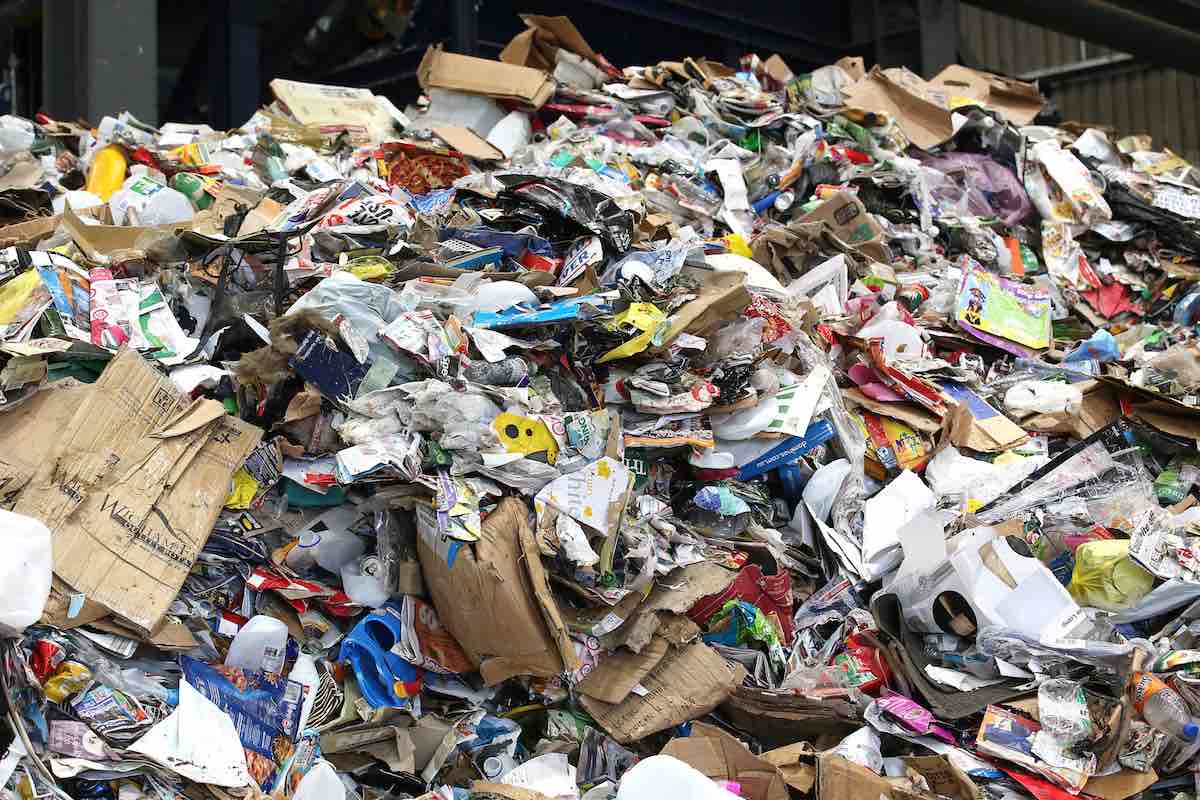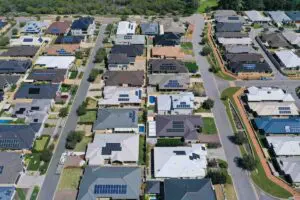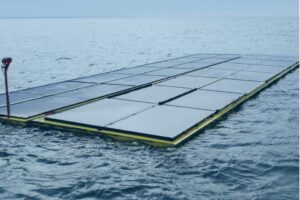The Australian carbon credit unit (ACCU) scheme is a centrepiece of the Australian government’s climate policy, providing the offset credits (ACCUs) that will be relied on by large-emitting facilities to meet a large proportion of their emission reduction obligations under Australia’s carbon pricing scheme, the Safeguard Mechanism.
To date, about 30% of all ACCUs have gone to landfill gas projects, making them the scheme’s second largest project type by credit issuances. Annual issuances to landfill gas projects are currently approximately 4.1 million ACCUs per year, worth around $150 million.
Landfill gas projects receive ACCUs for capturing and combusting methane emitted from landfills. Methane is a potent greenhouse gas that is emitted from landfills when organic materials decompose at the sites in anaerobic conditions (i.e. without oxygen). The operators of the projects capture and combust the methane, which neutralises its warming effects, using either in a flare or an electricity generator.
For more than 18 months, a debate has raged about the integrity of landfill gas projects. The place of landfill gas projects in the ACCU scheme, and the linkages between the Safeguard Mechanism and the ACCU scheme, make this a big deal. If the ACCUs from landfill projects lack integrity, it will undermine Australia’s emission reduction efforts and result in more emissions from facilities covered by the Safeguard Mechanism.
The debate about the integrity of landfill gas projects has been about one issue: whether, and the extent to which, they would capture and combust the methane if they didn’t receive ACCUs (otherwise known as ‘additionality’).
With landfill gas projects, a ‘baseline’ is used to address this additionality risk. The baseline is a prescribed proportion of the gas captured and combusted at each site.
ACCUs are not issued for this baseline proportion – they are deducted from the total amount of methane combusted at the site when calculating the credited abatement. For example, if a project has a 30% baseline and combusts 100 tonnes of carbon dioxide equivalents, it will be credited for 70 tonnes.
Landfill gas baselines should represent a conservative estimate of the amount of methane that would be captured and combusted at the sites if they did not receive ACCUs.
Arriving at this conservative estimate requires consideration of the two reasons landfills would capture and combust methane if they did not receive ACCUs, either:
– Because the site owners are required to by state laws, under the environmental licences that authorise the operation of the landfills; or
– Because, in the case of sites with generators, they receive revenues from the sale of electricity and renewable energy certificates (LGCs).
Integrity issues have arisen with landfill gas projects because the baselines have been set too low – in simple terms, the baselines do not properly account for these two drivers of methane combustion.
The primary issue with the baselines relates to projects that have generators, not “flaring-only” sites.
Generation projects account for the vast majority of the ACCUs issued to landfill projects. The 20 largest sites, all generation projects, have received approximately 70% of the total number of ACCUs issued to these projects, and the top 30 account for around 80% of issuances.
The sector is highly concentrated because our landfill sector is highly concentrated – the largest 20 landfills in the country receive around 50% of all waste deposited in landfills in Australia.
In 2011-12, when the rules governing landfill gas projects were first being made, the government and industry reached a negotiated outcome in which it was agreed that 30% would be set as the default minimum baseline proportion under the method. Projects would use the higher of the default 30% or any specific proportion set under the applicable state/territory laws.
The problem was that this deal did not account for the incentive that landfill gas operators have to capture more than the regulatory minimum because they are able to sell electricity and LGCs (point 2 above).
Worse still, the government also agreed to provide a sweetheart deal to existing projects that allowed them to rollover their old baselines from programs established in the early 2000s (the federal Greenhouse Friendly program and NSW Greenhouse Gas Abatement Scheme).
The outcome from the sweetheart deal was that the oldest, largest and most profitable generation sites were given the lowest baselines, set at either 0% or 24%.
These baselines were substantially below the regulatory requirements for the sites, meaning project proponents were receiving offset credits for doing what the site operators were required to do by law. Even for new projects, the 30% baselines were too low because they did not account for the incentive provided by the ability to earn revenues from the sale of electricity and LGCs.
In 2018, the Emissions Reduction Assurance Committee formally decided that generation-based projects should not receive any more credits when their crediting periods finished, which was in or around 2021.
But in 2021, the Clean Energy Regulator, and a new Emissions Reduction Assurance Committee, decided to abandon that decision. They gave generation projects yet another extension to their crediting period (the third for some projects), and once again allowed the oldest, largest and most profitable generation sites to keep their old, highly concessional baselines.
There is a reasonable case that generation projects should receive some ACCUs to incentivise methane capture and combustion, even at old sites. But the baselines must:
– Be no lower than 50% at generation sites;
– Be higher for larger sites to account for the economies of scale associated with generation projects (i.e. it is more profitable to operate larger sites compared to smaller sites); and
– Increase through time to incentivise continual improvement and increasing gas capture at the sites.
All of this was ignored in the 2021 decision and, when the problems with the decision were pointed out, the Clean Energy Regulator and Emissions Reduction Assurance Committee denied there was an issue, even when most of the landfill gas industry came out publicly and agreed the baselines for some sites were too low.
The Independent Review of the ACCU scheme, otherwise known as the Chubb Review, looked at the landfill gas rules and recommended that they be revised again, with an emphasis on the baselines, and that proponents be given the option to transfer onto the new rules once they are settled.
This was strange on a number of levels, particularly the notion that proponents be allowed to choose whether they accept higher integrity requirements.
Now the Department of Climate Change, Energy, the Environment and Water (DCCEEW) is in closed-door negotiations with the industry about the new rules and baselines. But before the details of the ‘new deal’ have been announced, the projections team in DCCEEW has released its assumptions for what would happen if the generation projects no longer received ACCUs. The projections report, released last week, states:
“Emissions in the waste sector are projected to decline from 2023 to 2030 due to improvements in waste diversion. After 2030, when the majority of ACCU scheme waste projects conclude, emissions increase marginally to 2035 as it is assumed that the abatement impact of these projects slowly declines over time without a sustained financial incentive to continue to invest in landfill gas capture.” [Emphasis added]
Translated, what they are saying is that, when the projects stop receiving ACCUs, there will be a relatively small increase in methane emissions from relevant landfills – in other words, the ACCUs were not incentivising much abatement beyond what would occur anyway.
This is made clearer in the projections method report, where it states:
“The model includes adjustments to the internal ACCU modelling to reflect the advice that all abatement from ACCU projects in the waste sector is unlikely to end immediately following the completion of ACCU contracts. However, in most cases, lower levels of investment can be expected. The model assumes that, following contract completion, abatement from projects which involve landfill gas flaring will decline by 10% per year to a baseline of 30% of the current abatement. Abatement from projects which involve an additional source of funding, such as electricity generation from landfill gas, will decline by 5% per year following contract completion to a baseline of 50% of the current abatement.” [Emphasis added]
So they are saying that without ACCUs, gas capture and combustion will fall to 50% of the total amount captured at the sites. Put another way, if the baselines for landfill gas projects actually represented what they should (i.e. how much the sites would capture if they did not receive ACCUs) then they should be set at 50%, not their current levels, which average around 22%.
Moving to even, uniform 50% baselines would cut the number of ACCUs issued to landfill projects to around 2.6 million per annum, a decrease of almost 1.5 million ACCUs from current levels, worth about $50 million each year.
Word on the street is that, despite this advice from DCCEEW’s projections team, the deal that is being worked on by the methods group in the same department will offer all projects a 37% baseline, increasing by around 1.5% per annum.
How this could be justified is anybody’s guess. By law, the baselines need to be conservative and supported by “clear and convincing evidence” – this proposal does not satisfy either.
A 37% baseline arguably better reflects the regulatory requirements at medium-sized sites, compared to 30%. But, once again, a baseline around 37% does not capture the impacts of the incentive provided by the ability to earn revenues from the sale of electricity and LGCs.
Making it uniform across all sites also means the baseline does not capture the impacts of the economies of scale that exist with landfill projects, or the differential regulatory requirements that apply to larger, urban sites. It even stupidly penalises small flaring sites by treating them the same as larger generation sites.
So much for the promise of a new dawn, where integrity reigns supreme.
Andrew Macintosh is Professor and Director of Research, ANU Law School, Australian National University and Don Butler is Professor, Australian National University










